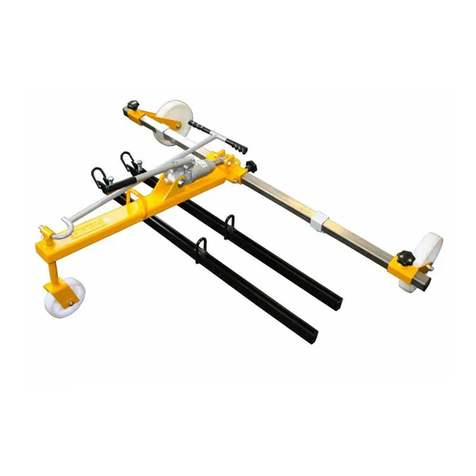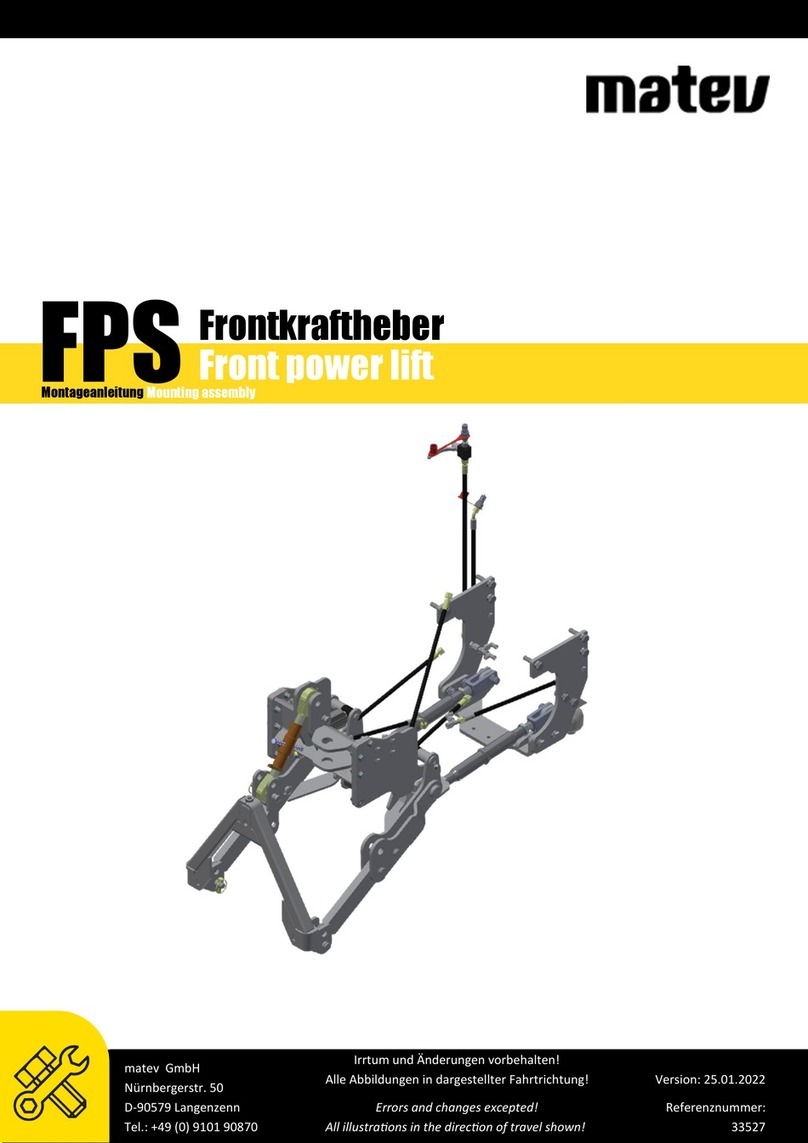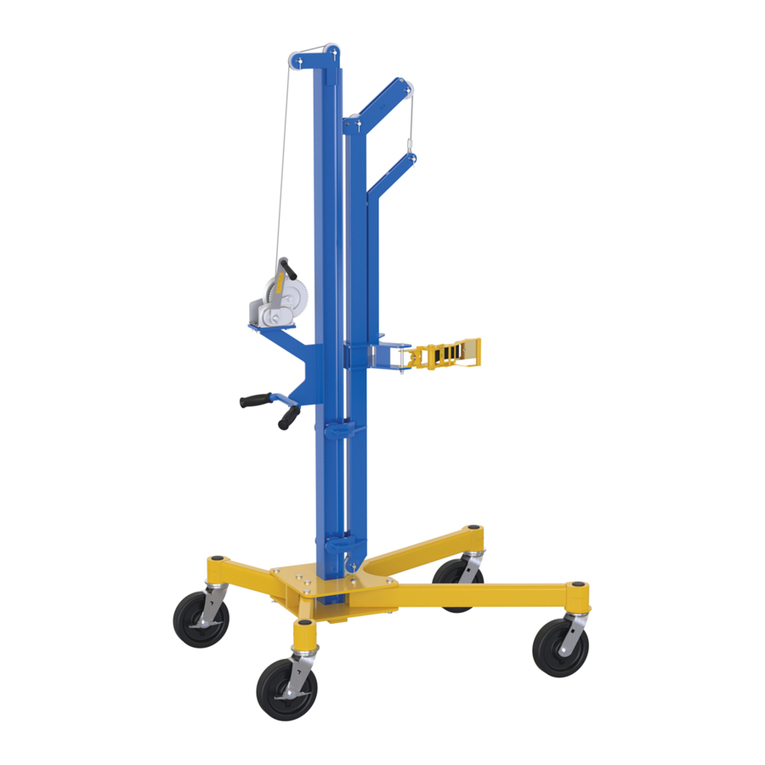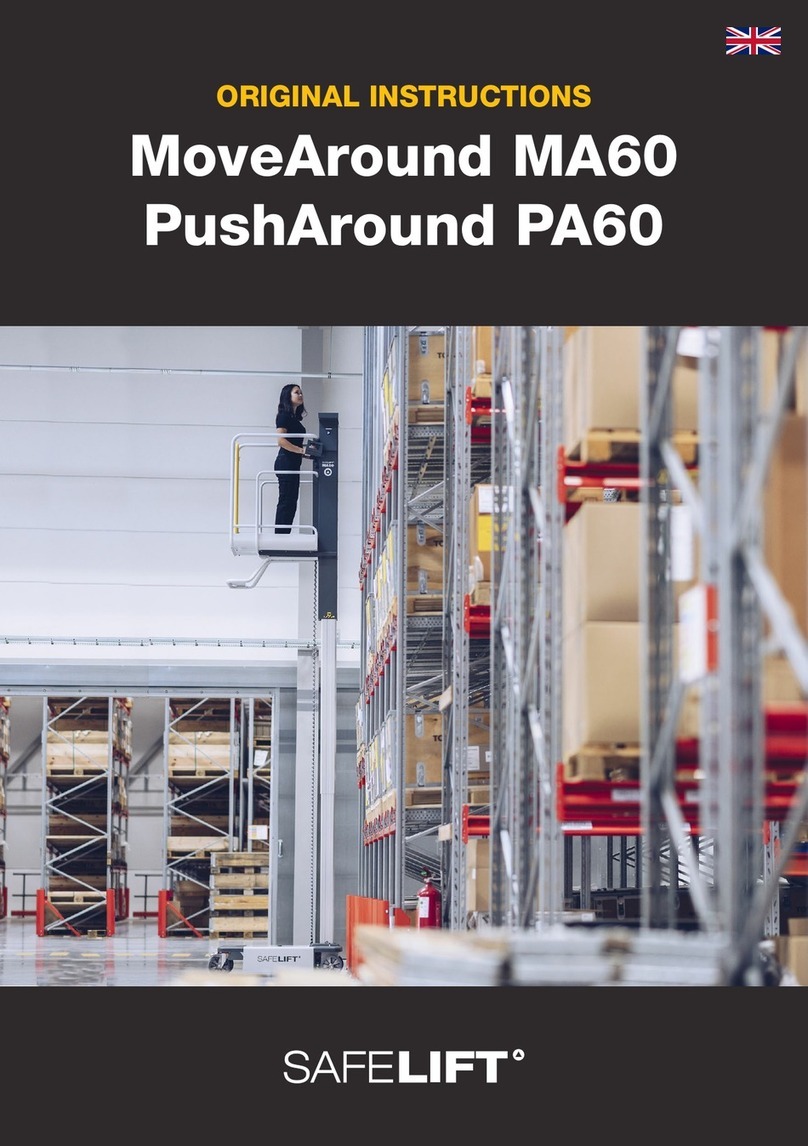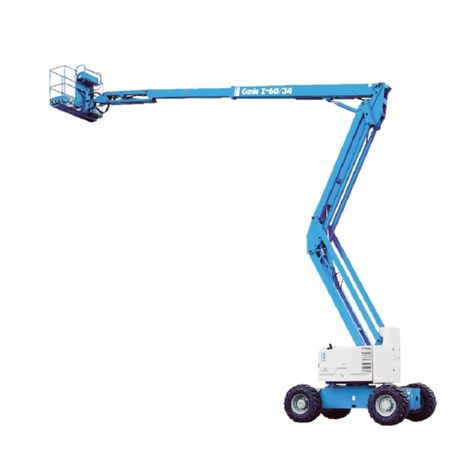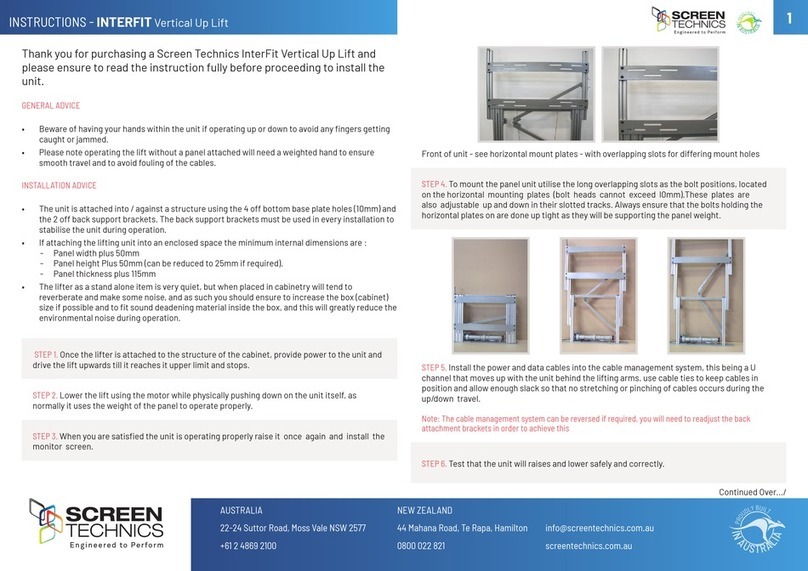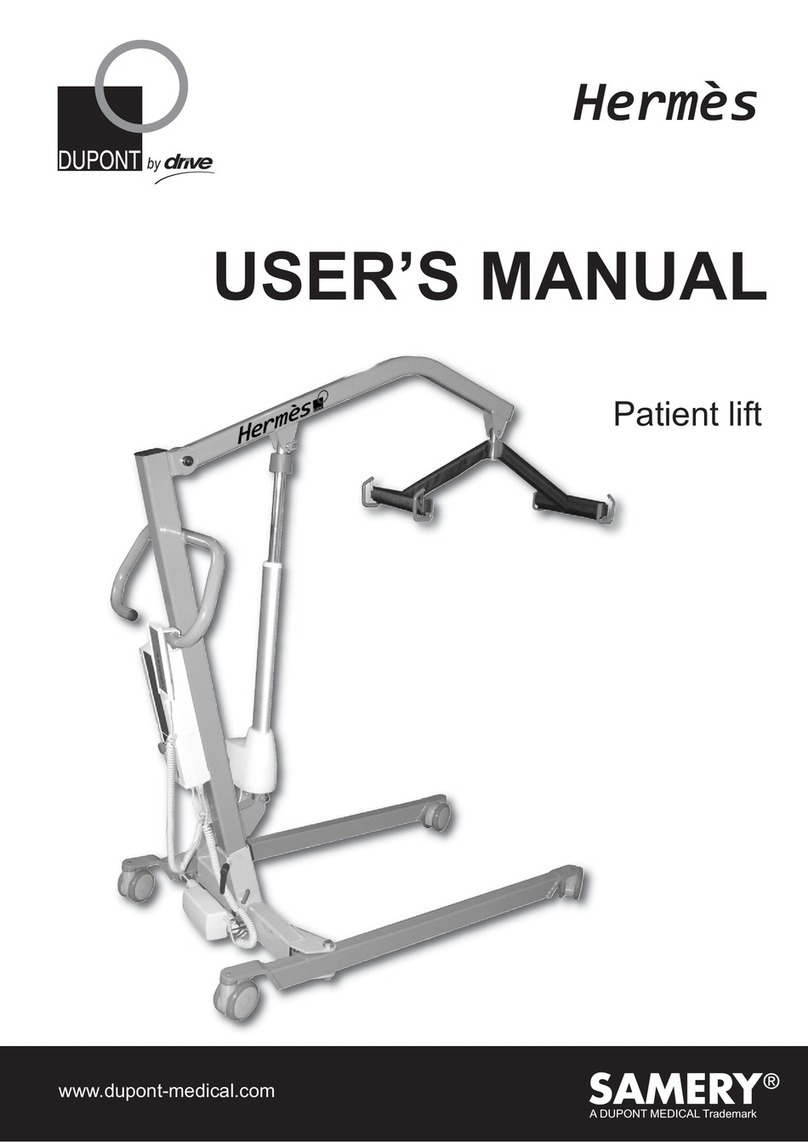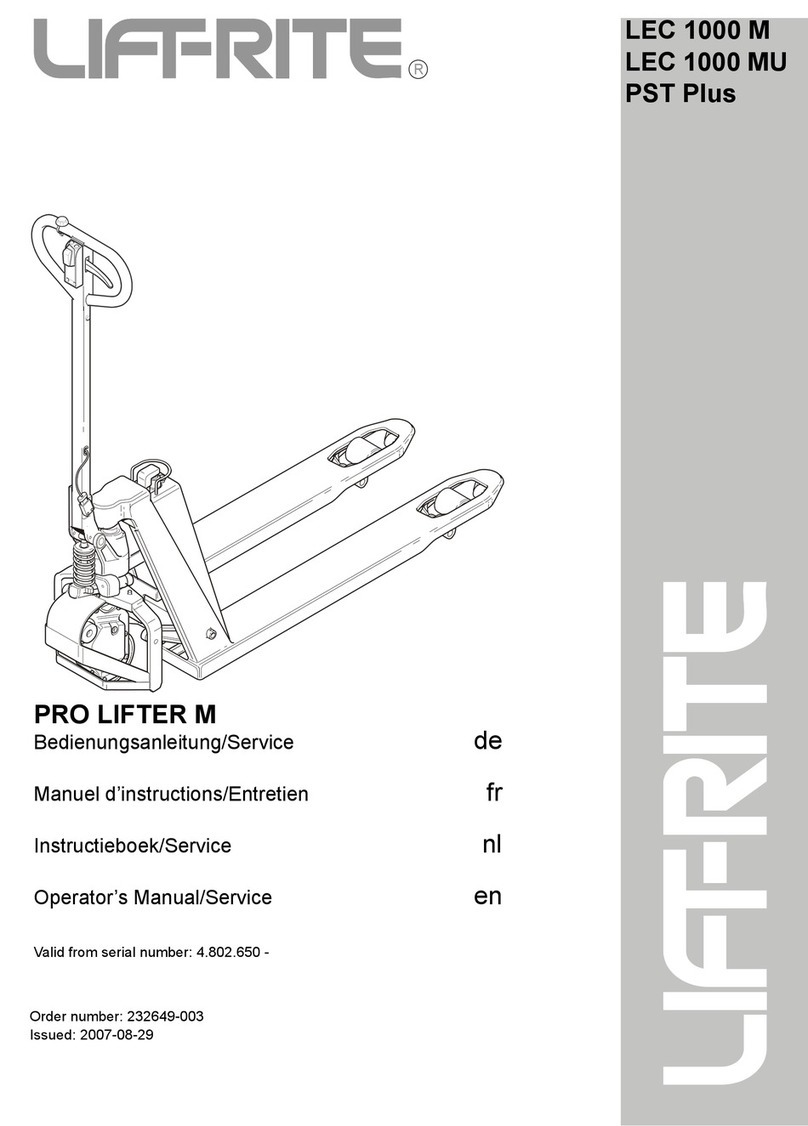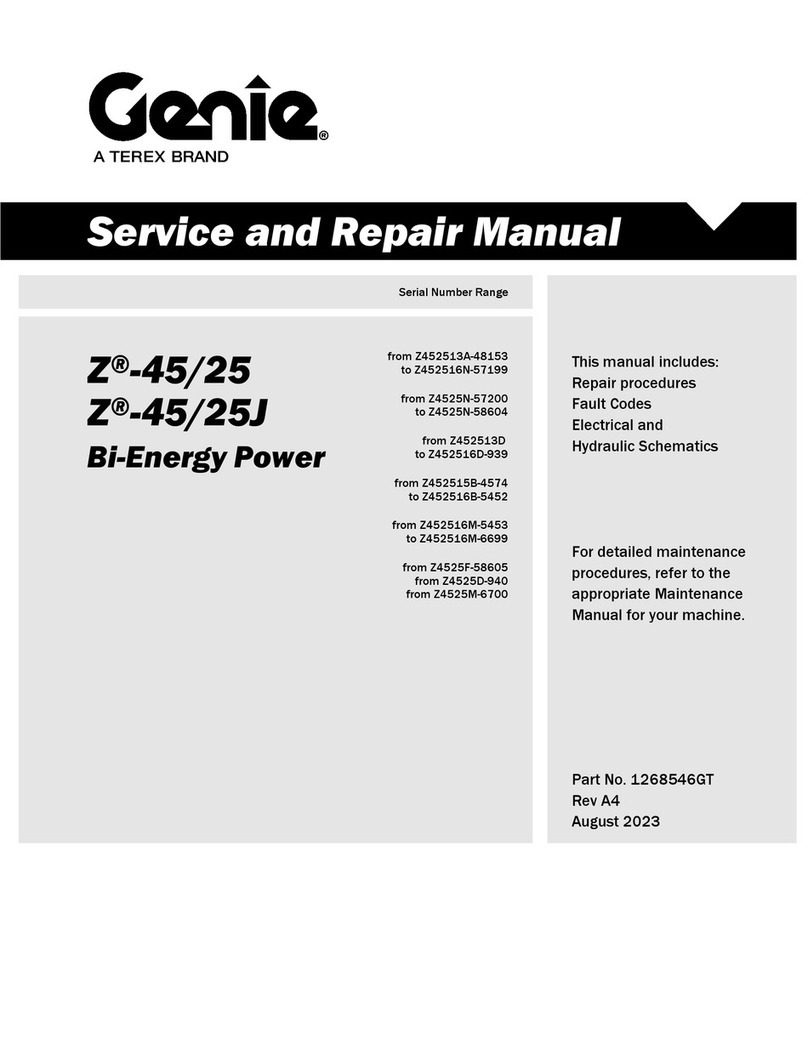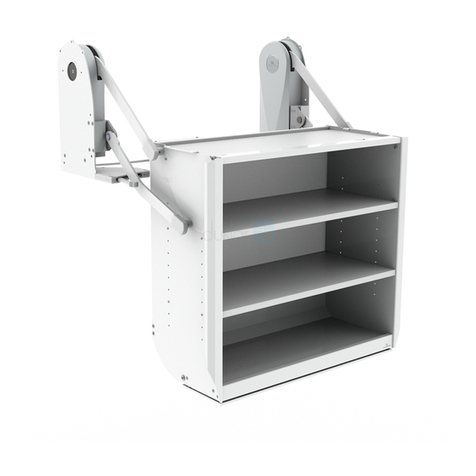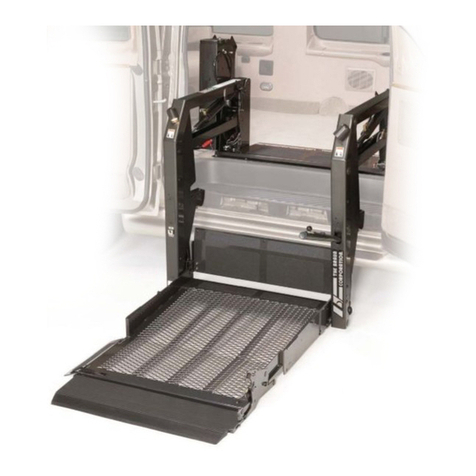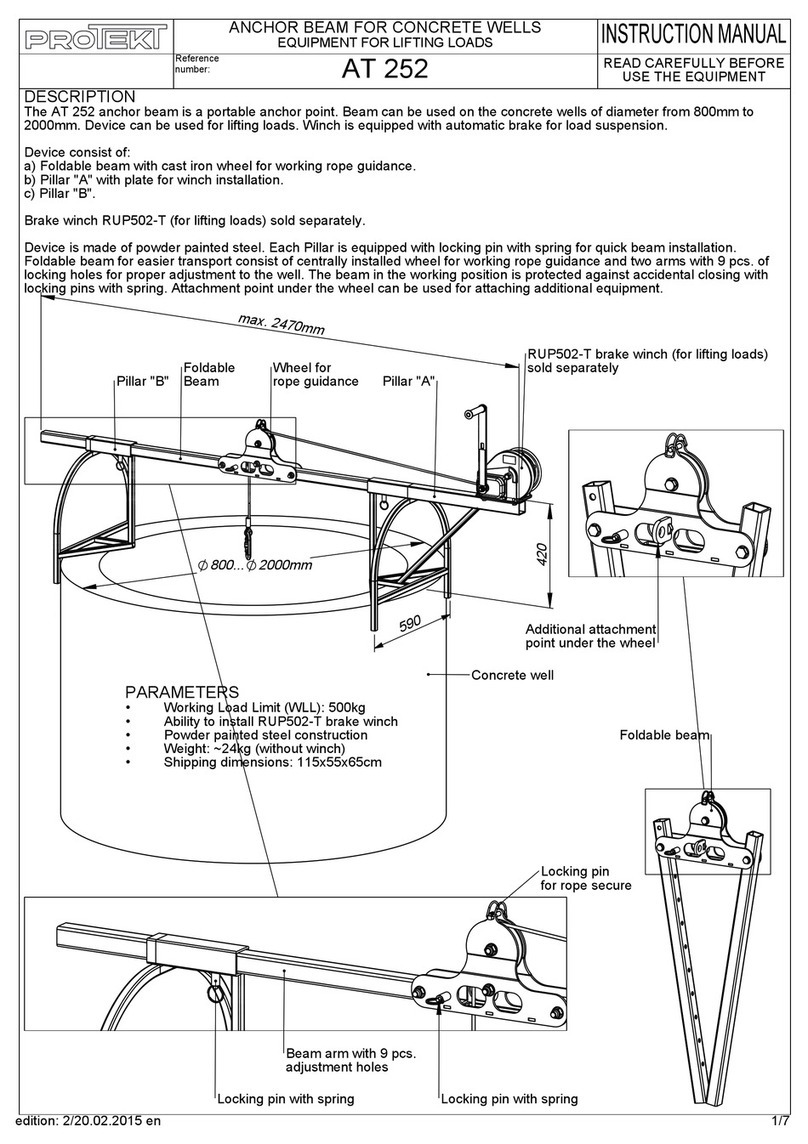
Lift-Rite, Tel: Toll Free from USA: 1-800-558-6012,Greene, NY 13778, Publication Number 1346965/001A ©2021 Dated: 21 Jun 2021
4
PERSONNEL LIFTER INSPECTION
• Use the personnel lifter only after having completed the daily inspection checklist. For further
information, consult the Preparation and Inspection section in this manual.
• Make sure that all of the safety devices function correctly.
• Report any malfunction, damage, or unsafe condition immediately. Do not operate the personnel lifter
until corrected.
WARNING: Modifications or alterations of the personnel lifter may only be carried out
with written authorization from the manufacturer and permission from the owner.
Failure to use approved replacement parts may result in personnel lifter instability,
malfunction, damage, injury, or death.
Where it is not possible to obtain written permission from the manufacturer, modifications to the
personnel lifter shall be made following the guidelines and instructions provided by an engineer familiar
with mobile elevating work platforms. The modifications shall comply with all design and testing
requirements defined in CAN/CSA B354.6.
• Do not operate the personnel lifter if any decals are illegible or missing.
INSPECTION OF THE WORKPLACE
• Prior to operating the personnel lifter, and during operation, the operator shall immediately report any
potentially hazardous conditions that becomes evident and stop operating the personnel lifter. Do not
use the personnel lifter until the unit has been repaired or the hazardous condition has been fixed.
• Comply with instructions and warnings regarding potential hazards identified in the workplace.
• Personnel lifter is for indoor use only.
• Before operation, check for uneven floors, drop-offs, holes, bumps, debris, and other floor
obstructions, including those concealed by water, ice, mud, etc.
• Do not operate on a slope.
• Check for the presence of unauthorized personnel.
• Before operation, inspect your work area for hazards such as electrical lines and other overhead
obstructions. Make sure that adequate clearance is maintained from overhead obstructions and
energized electrical conductors. When the personnel lifter is to operate within the area of travel of a
bridge, crane, or similar equipment, steps shall be taken to prevent a collision with the personnel lifter.
• Do not operate or raise the operator compartment on trucks, semi trailer truck beds, railroad cars, boats
on the water, scaffolds or similar structures or vehicles.
• Do not travel on unlevel or soft surfaces that could cause the personnel lifter to slide or tip.
• Verify the surface can support the weight of the personnel lifter, operator, and load, taking into
consideration sub-surface voids such as cellars, basements, culverts and pipes. Do not operate on any
slope greater than 1.5 degrees while in the elevated position. Do not operate on any slope greater than
4 degrees while in the lowered position. Only operate the personnel lifter on a strong, level surface that
will support the weight of the personnel lifter, operator, and the load.
• The personnel lifter may be operated at temperatures between 0°F and 104°F (-18°C and 40°C). Lower
the operator compartment when moving between cold environments (such as freezer) and warm
environments.
• When moving equipment or vehicles are present, special precautions shall be taken to comply with
local ordinances or safety standards established by the workplace. Warnings such as, but not limited
to, flags, roped off areas, flashing lights, and barricades shall be used as appropriate. Avoid contact
with objects/equipment.
• Operation of the personnel lifter in a hazardous location shall be prohibited if not approved and marked
for operation in such locations (see ANSI/NFPA 505). It is the responsibility of the user to determine the
hazard classification of the intended location of operation.
